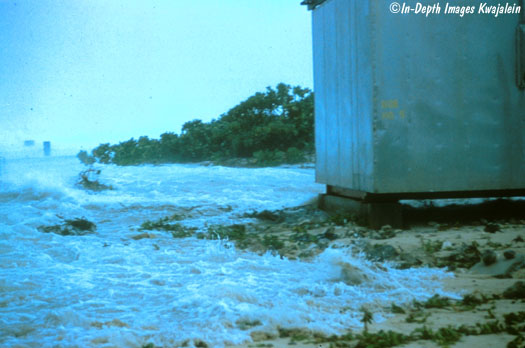
In the latter part of November 1982, we heard a tropical storm was southeast of us and heading west. We hoped it would go well south of us, but over the next few days, it kept creeping northward as it moved west. Finally, we got work from the weather station on Kwajalein that we were going to get clobbered, so we started battening down the hatches. By the midafternoon high tide, waves from the east were pushing up onto the island, flowing under my living trailer, and flowing slowly across the island to the lagoon. As the tide went down, the water subsided a bit, but by late afternoon the winds really started to hit and we hunkered down in the lab building. We were told it was gusting to 140 knots near the center, which went by south of us. Not long after dark, the waves started hitting the walls of the lab, spurting in through the doorways above the doorknob level. Water in the lab started to rise. Fortunately, our generators kept running so we had electric pumps pushing water out of the lab out the downwind windows.

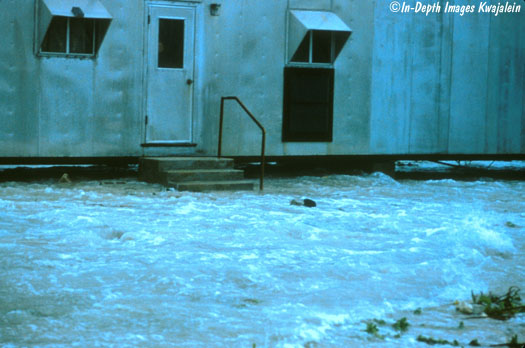
Around 1 am, the barometer finally started up again. By morning, it was still breezy, but it was over. After wandering around to look at the damage, we began to clean up. Below, the waves had piled debris up on the side of my trailer. Waves crashed in the louvered window and of the bedroom and washed the bed across the room. There was sand and water in my top dresser drawer, and water and sandy mud were strewn throughout the trailer.
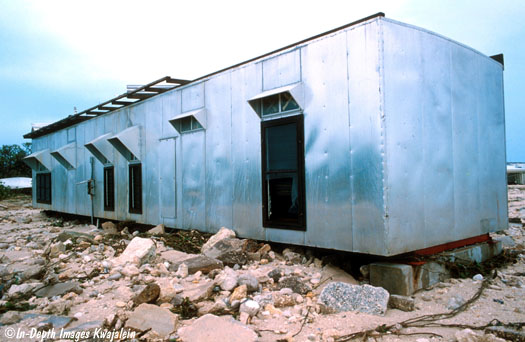
The wet lanai was standing but damaged. We lost a few aquaria and the sea tables were washed around.
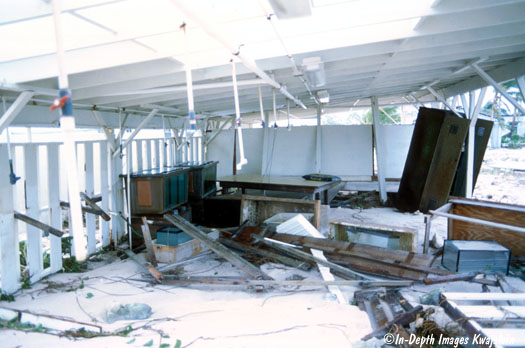
A couple of aquaria on a sea table had surfed a few feet over to land unscathed next to some knocked over boats.
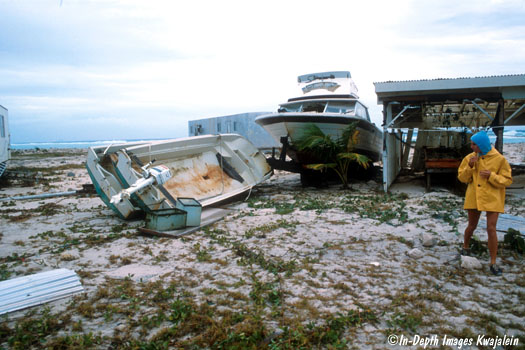
Rocks and sand covered what had been a mostly grass and vine covered area in front of the trailers. The sea water tower still stood, but the pumphouse below was damaged.
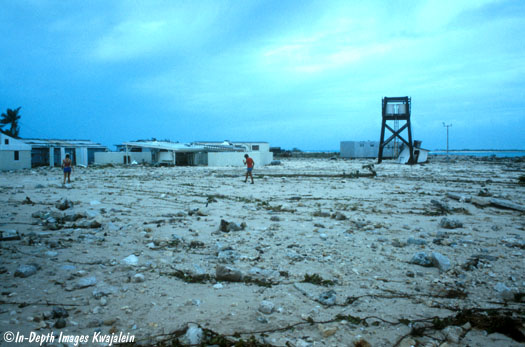
Debris from the wet lanai piled up on top of some boats around the end of the lab, and one of our antennas was nearly knocked down. Another aluminum radio antenna did fall during the storm, making a racket that sounded like the end of the world.
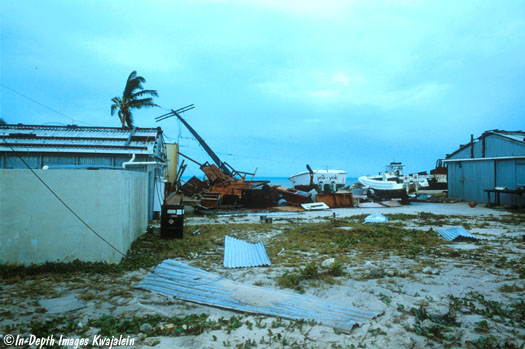
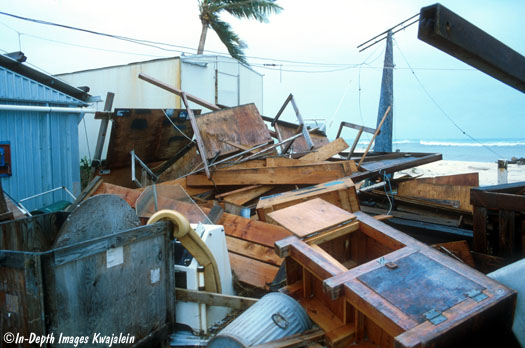
Down the island a ways, some of the Enewetakese search for their house. Thankfully, no one was seriously injured, and the concrete houses most people lived in withstood the storm well. Nearly all the outhouses on the island were knocked over, however.
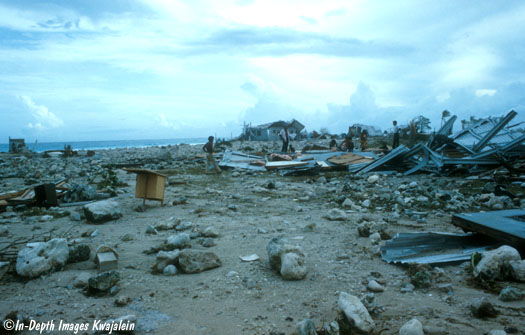
From a concrete three-story building, we can see some mostly abandoned aluminum buildings were severely damaged.
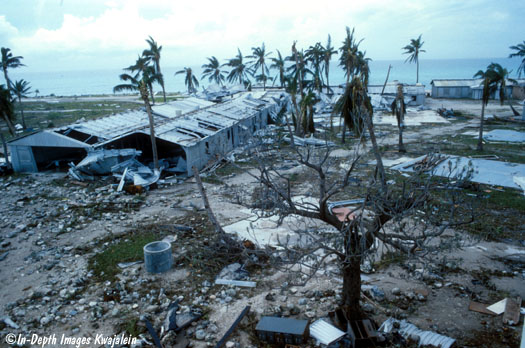
Some were virtually turned into aluminum foil. This building was similar in construction to our lab building. I guess we got lucky.
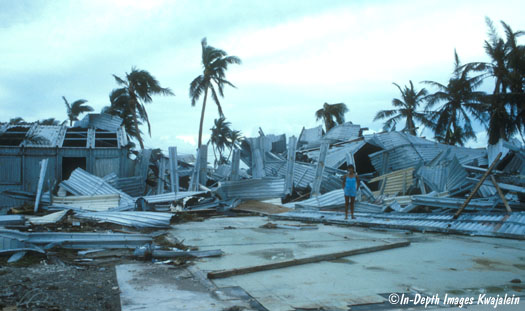
Turns out a lot of that aluminum sheeting ended up in the lagoon, quite a bit of it on a reef I regularly sampled for nudibranchs. After a few months for sponges to grow on the undersides of the sheets, there was a population explosion of nudibranchs on that reef, most of them under the aluminum sheets.
Press the Back button to return to the previous page.